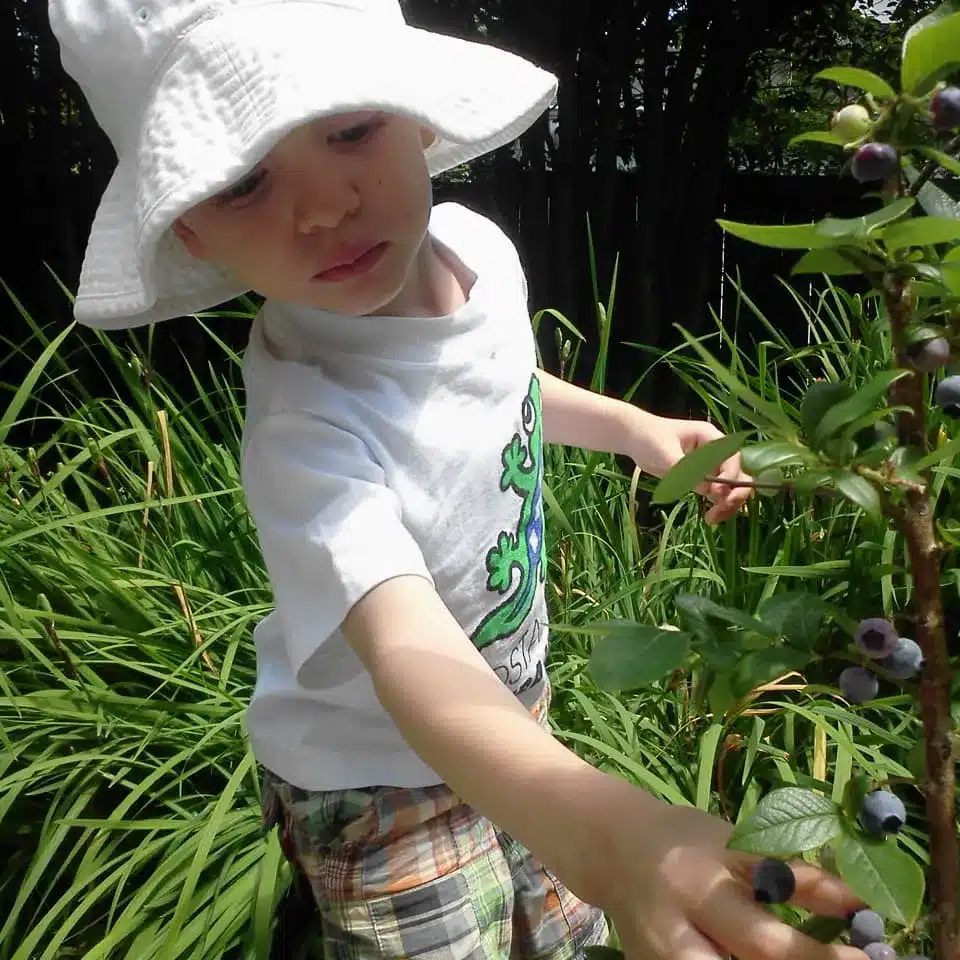Eat More Fruit! (Plus a Baked Apple Recipe)
“…for fruits and nuts and berries that grow along the way, we thank you we thank you, every day…”
When my kids were little we used to sing this verse before meals. As parents, we often worry about whether our children are eating enough vegetables, which is a valid concern. Most children, however, enjoy fruit, and while we certainly want to encourage a balanced diet that includes vegetables, we should remember that fruit also packs a great nutritional punch.
Right now, pomegranates are in season. My husband brings them home and has the skill and patience to extract the seeds, making them easy to eat. My grandson will sit with a bowl and eat them one at a time with a huge smile on his face.
Also, it’s a great time to get fresh oranges and apples. I like to slice apples and squeeze a little fresh orange juice on them, or to dip them in almond butter

Fruits are packed with vitamins, minerals, antioxidants, enzymes, and phytochemicals, which are essential for optimal health. Fruit also has water-soluble fiber that is critical, especially the inulins and saccharides, which are prebiotics. Prebiotics are food for probiotics, the good bacteria that live in the digestive system. Johns Hopkins researcher, Dr. Christiane Northrup, writes, “Your gut is a very delicate ecosystem, with more flora (healthy bacteria) in it than all the other cells in the body put together. When this ecosystem is healthy, your digestive tract has the proper balance of stomach acids and bacteria. This allows your body to breakdown food for nourishment and cell repair… In fact, [the digestive tract] is your first line of defense against bugs and other organisms that can make you ill.”
But What About All the Sugar in Fruit?
You may be wondering if there is too much sugar in fruit. Raw fruit is very cleansing to the upper and lower GI and the sugar from raw fruit is fuel for activity. How much fruit sugar one eats should be directly related to how active one is. Children are often very active, so it makes sense that they would be attracted to fruit. Bananas and dates have the most sugar and berries the least, so also keep that in mind when eating fruit
Even in the winter, my grandchildren delight in a sliced apple or pear, frozen blueberries, frozen cherries (I just recently discovered these!), oranges, grapes, and pomegranates. The sugar in fruit has companion nutrients so a healthy person has no need to avoid sugar from raw fruit. Fruit juice, on the other hand, should be used sparingly, as it is the concentrated sugars without the fiber and other beneficial properties that slow sugar’s absorption.
Opt for Organic Fruit
Organically grown fruit is always my choice and is readily available in many grocery stores. Pesticide exposure via non-organically grown foods has been implicated in increased risk of cancers, endocrine disruption, and a possible contributor to increased cases of ADHD. There is still much to learn about the differences between organically grown food and “conventionally” grown foods, but for now, I buy organic whenever possible
The Wonder of Fruit

Young children naturally love learning about where their food comes from. I remember sadly a young child who asked for fruit and was handed a package of small, gummy candies that were called “real fruit,” processed into candy form! Unfortunately I think that the child thought that those candies were what fruit is!
I’d suggest talking to children about all the types of fruit trees, the way strawberries grow on the ground, how raspberries will prick you when you pick them, how you have to protect the blueberries from the birds, the seasons when each fruit is available, and how far that orange had to travel to get to your house.
If you can, engage children in gathering fruit. I took one of my grandsons to pick organic apples and then we made homemade applesauce together. All of my grandsons love the homemade applesauce (even the 6-month-old!), and it is just apples (no sugar added). Last August, we visited friends in Vermont whose yard had about 30 blueberry bushes. Early every morning, my 3-year-old grandson couldn’t wait to go out, duck under the bird netting and pick a big bowl of fresh blueberries for all of us.
For snacking, raw fruit is a great option. For younger children cooked fruit is an easy snack. Simply steam fresh fruit and mash it up for the little ones. And who doesn’t love a fruit pie or a fruit crisp. Fruit is truly an amazing healthful food!
If you want to make an easy, warm, winter dessert, try this recipe for baked apples.
Baked Apples (adapted from The Book of Whole Meals by Annemarie Colbin)
Ingredients
- 4 red baking apples
- 15 to 20 raisins
- About 10 almonds, walnuts, or pecans
- Cinnamon to taste
- 1 ½ cups of water (or part apple cider or juice)
- Maple syrup (optional)
Cooking Instructions
Preheat oven to 400 degrees. Wash the apples, then remove the cores, without cutting through the bottoms of the apples. Slit the skin around the middle of each apple to prevent bursting while they bake; place in a 9-inch shallow baking dish. Stuff each apple with 3 or 4 raisins and nuts either chopped or whole; sprinkle with cinnamon and fill with water. Pour the remaining water into the baking dish to cover the bottom with ½ inch water. Bake for 30 minutes or until apples are soft inside.
Serve at room temperature or chill
I personally like these warm, especially in the winter. I sometimes add a little maple syrup before or after baking if I want something even a little sweeter.
Be well,


Suzanne, Certified Holistic Health Coach
